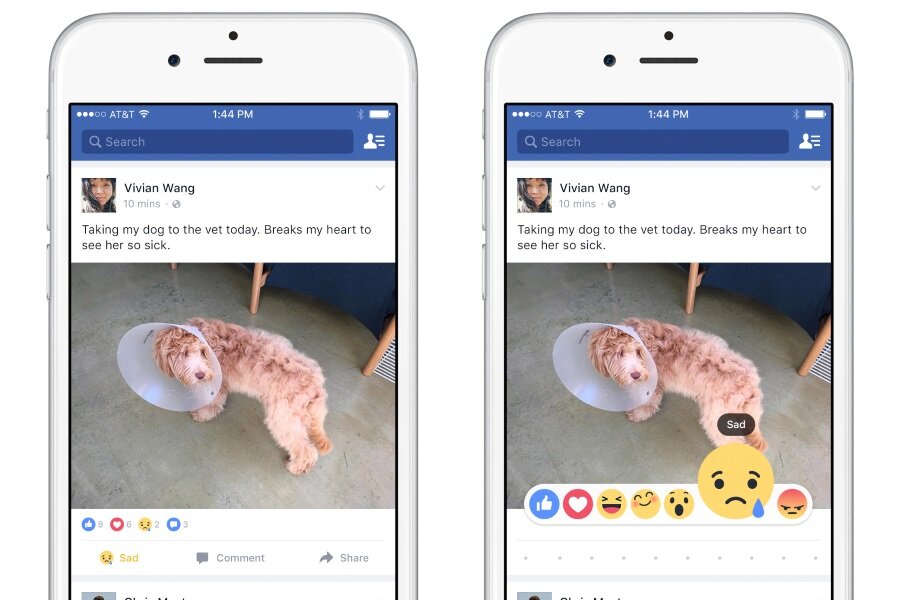Facebook's big conundrum: How to express reactions other than 'like'
Back in September, Facebook chief executive officer Mark Zuckerberg announced that the company was working on a feature that would allow users to better express sympathy on the site. After all, when a friend shares that their pet died, clicking “like” probably isn’t the best move.
“People have asked about the ‘dislike’ button for many years," Mr. Zuckerberg said at a town hall meeting. "We are working on it, and are very close to shipping a test of it.”
Soon after, the company clarified that it wasn’t focused on a “click to disagree” button, but rather a way for users to better acknowledge and empathize with events or stories that they thought were important.
This week, Facebook announced that it’s testing out “Reactions,” a set of six emoji that add some emotional depth to the otherwise staid “Like” button. You can pair the traditional thumbs-up with a heart, or with a face that’s laughing, excited, shocked, sad, or angry.
That way if a friend posts a story about, say, the Syrian refugee crisis, and you find it moving and important, you could respond with a shocked or sad face – avoiding the reductive “like” reaction that implies you might think the displacement of millions of people is neat.
This system avoids a binary thumbs-up/thumbs-down system, Facebook says, which might tempt users to simply “dislike” content they happen to disagree with in an effort to make it less visible on the social network.
“We studied which comments and reactions are most commonly and universally expressed across Facebook, then worked to design an experience around them that was elegant and fun,” Facebook Chief Product Officer Chris Cox says in a post on Thursday.
The emoji are being tested in Ireland and Spain before being rolled out to users in other countries. Ireland has a mostly self-contained user base, meaning that Irish Facebook users are friends mostly with other Irish users. Spain is a test to see how well the emoji work for non-English speaking users. Depending on how Irish and Spanish users react to the system, Facebook may tweak the emoji before enabling them for all users.
Facebook has been working on, or at least considering, a more nuanced emotional system than the “Like” button since at least 2013, when the company filed a patent for an emoji set. Once the “Reactions” emoji roll out for all users, you’ll be able to react to less-than-ideal news appropriately, even if you don’t have time to type out a heartfelt response.







